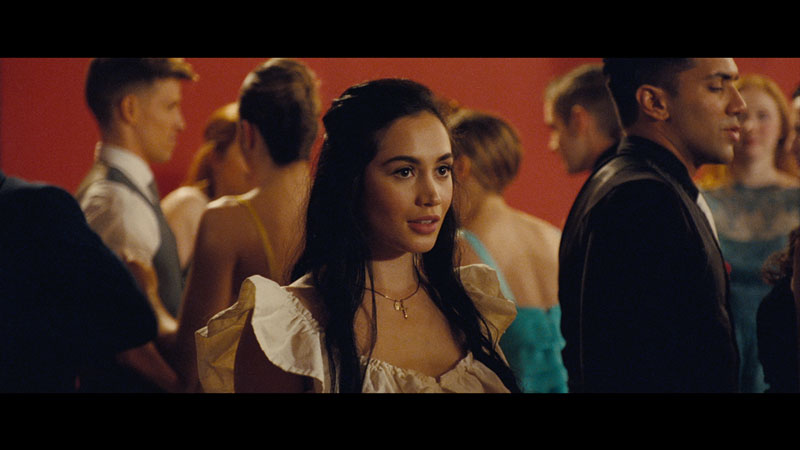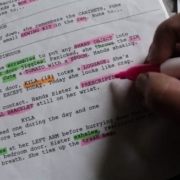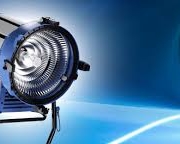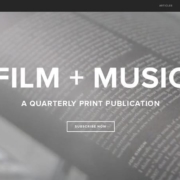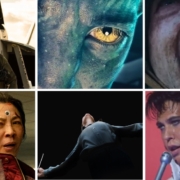Film vs Digital: Celluloid in the Digital Era with Rafael Leyva
Rafael Leyva specializes in feature films and focuses on capturing strong compelling stories on 35mm. In 2019 the International Cinematographers Guild of America named him as one of their Generation Next DPs. He has lensed for clients such as Disney Pictures, SONY Pictures, Netflix, FOX, NBC, Hallmark, Lifetime Channel Network, Syfy Channel Network, and many more.
Rafael visited the studio at Filmmakers Academy to sit down with host Brendan Sweeney and discuss everything from his preference for shooting on film to that one time he courted Steven Spielberg for 2nd unit on West Side Story.
WATCH FINDING THE FRAME WITH RAFAEL LEYVA
THE CHALLENGE OF ESTABLISHING YOUR CINEMATIC VOICE
Rafael Leyva is not the conventional kind of filmmaker who sends out his resume and waits for a response. Instead, he’s bold and takes chances, and even invests his own money and resources to create something special that will make him stand out from other filmmakers. In fact, there’s a little tale about Rafael that illustrates his “hustler” approach to filmmaking.
After Rafael wrapped on a particular show, he was troubled when he wasn’t invited to the final DI. In fact, that’s why he likes to shoot on film. When shooting on film, cinematographers have much more control of the image. In digital, however, other people outside of the cinematographer’s power can dip their spoon, so to speak, into the imagery and ultimately change and affect the look.
The show was a studio picture series and Rafael and his team shot it in a specific way on set. But by the time the finished product was streaming, he was stunned to see how different it looked. Rafael knew that if he was to establish his own visual voice, he would have to take some career chances.
 |
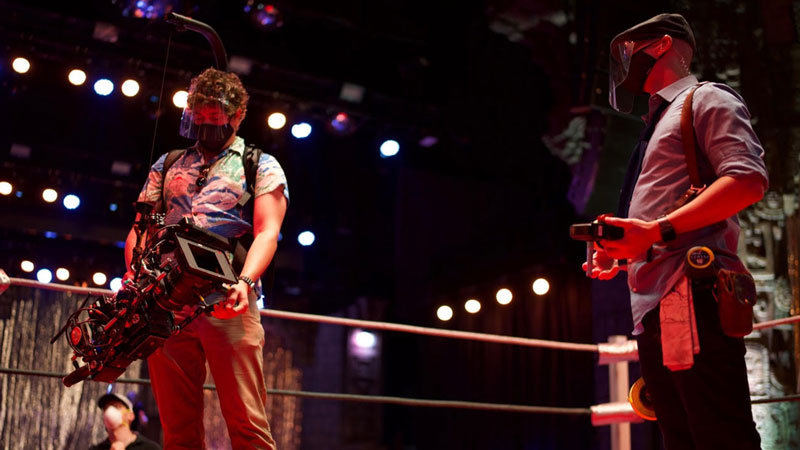 |
Meanwhile, that same day, Rafael discovered that Steven Spielberg and Janusz Kaminski were working on an adaptation of the musical, West Side Story. A lightbulb then went off in his head so he called his representation and told them about it. At first, they were like, “So?” But then, Rafael explained how as a Puerto Rican DP, he could really relate to the subject matter. So, they recommended that he write Steven and Jan a letter.
Rafael ended up writing a letter to Steven Spielberg and a month later he was told that it was well received. When Rafael asked what was next, they told him to wait since they were still in development.
“Obviously, I’m not gonna wait,” says Rafael, “because if you know me, I’m like super-hustler and I’m always striving to work with the best or at least to work in a standard of quality that I feel happy with.”
INVEST IN YOUR FUTURE
At the time, Rafael decided to sell his car, lenses, and Nikon D50 and amassed $10,000. He then canceled his Christmas vacation to Puerto Rico and instead flew to Dallas because there was a private school that had access to the original costumes in a warehouse. Rafael brought the costumes back to Los Angeles and spent New Year’s Eve figuring out how he was going to pull it off. Ultimately, the money Rafael pulled together was used to pay for the art department, insurance, and location.
For years Rafael refused to watch the original 1961 West Side Story because he found it offensive the way they portrayed Puerto Ricans. But when he finally brought himself to watch it, he realized it was a masterpiece with beautiful frames and master compositions. Then, he proceeded to shoot a lens test for Jan and Steven to show them what he can bring to the film.
Rafael was friends with someone who was the choreographer of Dancing with the Stars. This relationship led to a really great experience where they filmed dancers from the show on the same film stock and used PVintage glass. The response from Steven’s team and right-hand producer was very encouraging.
“It was all I needed,” explains Rafael. “I think the respect is everything and there’s a lack of it in our industry. It’s like really aggressive out there and I’m just like a big teddy bear.”
THE ADVANTAGE OF FILM VERSUS DIGITAL
While the digital era of filmmaking has opened the art form to anybody with a camera, the field has become much more saturated and competitive. In the past, film was celebrated because it was a feat to pull off. Today with the proliferation of the internet and streaming, we are no longer cognizant of the body of work being amassed. With the increased number of productions from innumerable sources, the respect for the art form has diminished in some ways due to its sheer volume.
With film, on the other hand, there’s something more pristine and cinematic about not only its texture but the limited takes. “And I think that’s why I love it the most,” says Rafael, “because when people watch something that you’ve captured in time, like a moment photochemically, that’s so cool.” In other words, “there’s no keep rolling.”
Time is everything when shooting film, from calculating the time before rolling out to the expense of the celluloid itself. What Rafael really prefers about film is the voodoo it takes to create along with the respect that comes with it.
“The discipline of it is so amazing,” explains Rafael. “To me as a nerd, as a cinephile, as someone that loves to do pictures correctly, it just sets the tone. Like everyone from the crew to the actors, from the front of the glass [to] behind the glass, having film in the horizon, it’s just kind of like, well, this is like the real deal.”
In addition to the emotional value of film, Rafael also thinks it’s the quickest way to shoot.
“The way I do it is like, well, we don’t have to spend money on a DIT or hard drives… Like, you cut your grip package in half, because you don’t need that much diffusion.” —Rafael Leyva
THE PHILOSOPHY BEHIND THE FORMAT
The format you shoot on should ultimately depend on the project. For example, Rafael notes how he believes The Revenant was shot favorably on digital, whereas he would propose that HBO’s The Last of Us should have been shot on film. There’s a visual contrast between the show and the film emulation in the video game. According to Rafael, 35mm 3-perf pushed one stop looks amazing and would have been a solid look for the series.
 |
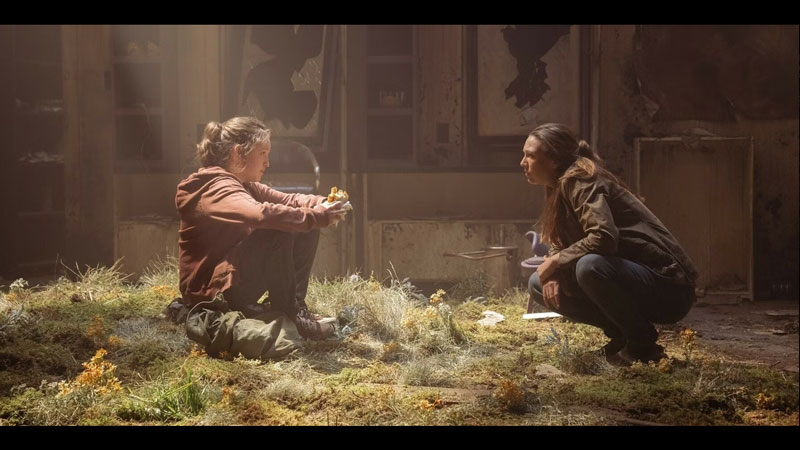 |
Brendan Sweeney explains his personal philosophy with period pieces and how they should be shot on film to fit our visual connection through old photographs. In contrast to this philosophy, he cites All Quiet on the Western Front shot by James Friend. The cinematography of the film is absolutely amazing but it may have benefitted from celluloid film to provide more connective tissue tethering it to the time period.
Agreeing with the first EPIC HIGH-FIVE in Finding the Frame history, Rafael professes his love for the “45-degree shutter Saving Private Ryan recipe” that delivers a visceral, kinetic, and emotional connection.
Other considerations when choosing a film or digital format are the color palette, locations, and time allotted for production. For example, the reds and blacks in film are superior and more vivid. Conversely, the low light capabilities of film are incredible.
“I’ve been in situations where I know for a fact that I look at the frame and I’m like, ‘If I was shooting 35 and pushed the film two stops, it will not get nearly as beautiful as right now.” —Rafael Leyva
CRAFTING YOUR OWN CINEMATIC VOICE
While there are the filmmakers who champion celluloid, there are those digital pioneers like David Fincher who transitioned from film and now stand by the science and technology produced by RED Digital Cinema. Rather than try and emulate film, Fincher has made something wholly unique with films like Gone Girl, The Social Network, and The Girl with the Dragon Tattoo. It’s like a very tangible, hyper-realistic feel. Rafael describes it as “cinematic clean.”
Obviously, the cinematic voice varies with each filmmaker. The way Fincher directs for low light suits the types of stories he tells, and it looks flawless. However, there are also filmmakers who are pushing the boundaries of filmmaking like Peter Jackson and Ang Lee who shoot higher frame rates like 48 fps and 120 fps. Photo-real cinematography may not always look the most traditionally cinematic but it helps push the potential of the medium into novel forms of storytelling.
“I think we got to push the barrier. What’s the next frontier?” —Rafael Leyva
THE FOSTER RANCH
A project also shot on film was Rafael Leyva’s latest project, The Foster Ranch, a story about the dissolution of a family on the night of July 7, 1947.
“In the last couple of years, I have developed a lot of sympathy and empathy for animals and mother nature,” Rafael says when sharing his feelings behind the project. “And I just kind of like feel uncomfortable in a weird way that humans are just like destroying everything. And just thinking that we’re not in a really good place, I wanted to do something that reflected on us.”
To Rafael, 35mm with anamorphic lenses is the most superior format that delivers a punch. When shooting 4-perf, you need to know exactly what you want because you’re locked into a 239 aspect ratio.
“I think about it now and seeing the way people reacted to the film and watching the film and the big screen. I would totally do it over again. Because it’s priceless and it’s shot on film. It’s just so cool.” —Rafael Leyva
WATCH THE FULL INTERVIEW
This is only a segment from our interview with cinematographer Rafael Leyva. To see the full picture of his experience working with film and The Foster Ranch, listen to the audio for free on Spotify or iTunes.
To watch the full video interview, become an All Access member today!
As an All Access member, you get full access to all other Finding the Frame interviews as well as every course and lesson instructed by industry professionals. On top of that, you gain entrance into our exclusive community and can use the FA app to enhance your skills while on the job!



